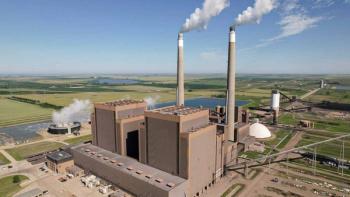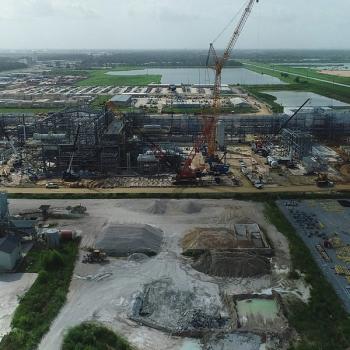
WHEN DOES SUBSEA COMPRESSION MAKE SENSE?
Over the last few years, we have written several columns about subsea compressors, hermetically sealed compressors, high-speed motor compressors and other related discussions. Late last year, the first subsea compressors went into operation at the Statoil Asgard field and a second machine followed in January of this year. From what has been reported, both have been operating well and have completed nearly 5,000 hours of combined operation. This is a great success for the turbomachinery industry, and the companies that have been driving the development. So we decided to pick up this topic again and look at the application more closely.
When subsea compression technology was first introduced as a concept, it was widely believed that once the technology was demonstrated, it would develop into a significant turbomachinery market. And many subsea compressors would quickly be installed. So far this hasn't happened although some of the responsibility clearly lies with the currently depressed oil & gas market. However, it may be useful to understand the limitations of subsea compression and its potential viability versus conventional on-platform boosters or onshore suction compression.
The question we wanted to ask is simply, when does subsea compression make sense compared to a conventional onshore pull compressor or a platform-mounted booster compressor. In some applications, subsea compression has the potential to significantly reduce offshore production infrastructure costs. Specifically, if the production is primarily natural gas with few liquids, and no significant gas processing is required prior to pipeline transport, a subsea compressor can be used to compress gas directly from the subsea wellhead to an onshore gathering plant and eliminate the need for an offshore production platform. This has been the main incentive to make the concept of subsea compressors attractive to the offshore oil & gas industry.
But this argument only holds if the distance from the subsea wellhead is such that an onshore pull compressor would not be able to handle the duty. Clearly, pull compression is far less efficient than push compression from a system perspective and requires significantly more horsepower.
On the other hand, the cost of current subsea compression systems is very high. And although one would expect that their cost would reduce over time as more of these machines are built, because of the harsh subsea environment and their design, subsea compressors will never be cheap. Additionally, depending on the production requirements, subsea compressors usually require at least 100% redundant backup for primary failures since maintenance and repair of a subsea machine is nearly impossible. So, no matter what, a subsea compression facility will always be significantly more expensive than a comparably sized conventional onshore machine.
Therefore, the question is where is the break-even point between an expensive subsea compressor and an onshore pull compressor that will require more installed horsepower for the same amount of flow? Because of larger suction flow volumes, pull compression always requires larger pipelines and more compression power than push compression. Another factor is that above a certain distance, pull compression is impractical because power requirements become excessive.
A somewhat oversimplified example calculation illustrates the point. For a natural gas flow of 250MMSCFD starting at 200 psig through a 30-inch, 20-mile pipeline to 150 psig discharge, about 3,500 hp is required for push compression versus 8,700 hp for pull compression. However, an 8,700 hp onshore conventional pull compressor would likely be cheaper than installing 3,700 hp of subsea compression. If one increases the distance of the subsea pipeline to 40 miles, though, the difference in required horsepower goes to 9,800 hp push versus 37,300 hp pull compression. Even that may still be viable for an onshore pull compression solution. But at 60 miles, the difference between push versus pull compression is excessive with a subsea compressor requiring 21,100 hp versus a pull compression onshore installation requiring 135,800 hp. In this example application, somewhere between 40 and 60 miles between the offshore wellhead and the nearest beach would be the decision breaking point between subsea and onshore compression.
One should note that this is an example for one set of simplified operating conditions. Other site conditions, such as type of fluid, number of wells, pressure at the wellhead, allowable pipeline diameter, pipe smoothness, required electrical power cable length and underground topography may make this analysis and comparison far more complicated and may drastically alter the results. In comparing the two options, it needs to be considered that a compressor on the beach or on deck is not really necessary to bring gas to the first production separator at, say 1,000 to 1,500 psi. In fact, this pressure is achieved downstream of the choke for backpressure control. The compressor on deck provides compression for flash gas recompression, or subsequently gas lift, gas re-injection or gas export compression downstream of the separator. The subsea wellhead pressure for either version might be 2,000 psi or more, but for subsea compression and separation, there typically is a choke installed, that will bring the suction pressure for the compressor down to, say 400 or 500 psi. The subsea compressor, then, will have to increase the pressure to the level that allows the gas to reach the beach or the deck at 1,000 to 1,500 psi.
In this case, the offshore distance at which subsea compression becomes attractive when compared to conventional platform or onshore compression becomes significantly greater. The above example aims to illustrates that there are clearly good applications for subsea compression. But a careful analysis is required for the application to determine when subsea compression is cost beneficial over conventional compression solutions.
Newsletter
Power your knowledge with the latest in turbine technology, engineering advances, and energy solutions—subscribe to Turbomachinery International today.




